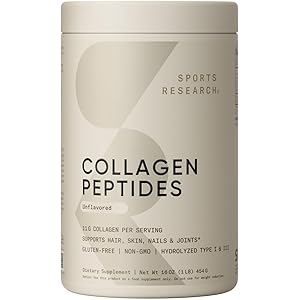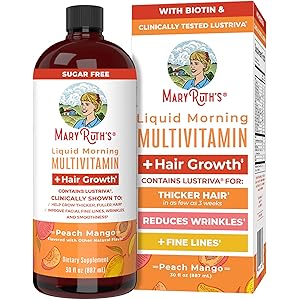Sports Research Collagen Peptides for Women & Men, Unflavored, 16 oz., Hydrolyzed Type 1 & 3 Collagen Powder Protein Supplement for Healthy Skin, Nails, Bones & Joints
$32.95 (as of May 19, 2025 11:59 GMT +00:00 - More infoProduct prices and availability are accurate as of the date/time indicated and are subject to change. Any price and availability information displayed on [relevant Amazon Site(s), as applicable] at the time of purchase will apply to the purchase of this product.)Understanding Nutrient Bioavailability
Nutrient bioavailability refers to the proportion of a nutrient that is absorbed and utilized by the body after consumption. This concept is crucial in nutrition science, as it determines how effectively our bodies can use the vitamins and minerals we ingest. Factors influencing nutrient bioavailability include the source of the nutrient, the presence of other dietary components, and individual physiological conditions.
Factors Affecting Nutrient Bioavailability
Several factors can significantly impact nutrient bioavailability. For instance, the chemical form of the nutrient plays a vital role; some forms are more easily absorbed than others. Additionally, the presence of other nutrients can enhance or inhibit absorption. For example, vitamin C can improve the absorption of iron from plant sources, while phytates found in whole grains can hinder it. Understanding these interactions is essential for optimizing nutrient intake.
The Role of Food Matrix in Nutrient Bioavailability
The food matrix, which refers to the physical and chemical structure of food, greatly influences nutrient bioavailability. Whole foods often contain a complex interplay of nutrients, fibers, and phytochemicals that can enhance or reduce the absorption of specific nutrients. For instance, consuming whole fruits may provide better bioavailability of antioxidants compared to fruit juices, due to the presence of fiber and other compounds that aid absorption.
Impact of Processing on Nutrient Bioavailability
Food processing can alter the bioavailability of nutrients. Cooking, for example, can break down cell walls in plant foods, making certain nutrients more accessible. However, it can also lead to the loss of heat-sensitive vitamins. Understanding how different cooking methods affect nutrient bioavailability is essential for maximizing the nutritional value of our meals.
Bioavailability and Dietary Supplements
When it comes to dietary supplements, nutrient bioavailability is a critical consideration. Not all supplements are created equal; the form of the nutrient, the presence of additional compounds, and the delivery system can all affect how well the body absorbs and utilizes the nutrients. For example, certain forms of magnesium are more bioavailable than others, making them more effective in supplementation.
Individual Variability in Nutrient Bioavailability
Individual factors such as age, gender, health status, and genetic predispositions can influence nutrient bioavailability. For instance, older adults may have reduced gastric acid production, which can impair the absorption of certain nutrients like vitamin B12. Understanding these individual differences is crucial for tailoring dietary recommendations to optimize nutrient intake.
The Importance of Nutrient Bioavailability in Diet Planning
Incorporating the concept of nutrient bioavailability into diet planning is essential for achieving optimal health. Nutritionists and dietitians often consider not just the quantity of nutrients in foods but also their bioavailability. This approach ensures that individuals receive the maximum benefit from their diets, ultimately supporting better health outcomes.
Research Trends in Nutrient Bioavailability
Ongoing research in the field of nutrient bioavailability is uncovering new insights into how various factors affect nutrient absorption. Studies are exploring the roles of gut microbiota, food processing techniques, and the interactions between different nutrients. This research is vital for developing evidence-based dietary guidelines that promote optimal nutrient intake and overall health.
Practical Tips for Enhancing Nutrient Bioavailability
To enhance nutrient bioavailability in your diet, consider incorporating a variety of foods that work synergistically. Pairing foods rich in vitamin C with iron sources, consuming fermented foods to improve gut health, and opting for whole foods over processed options are all effective strategies. Additionally, being mindful of cooking methods can help preserve and enhance the bioavailability of essential nutrients.


